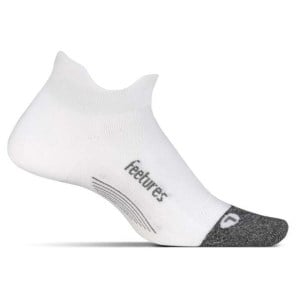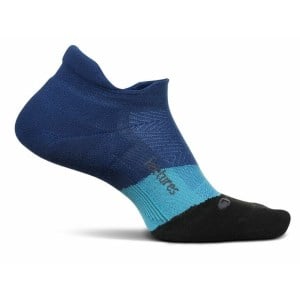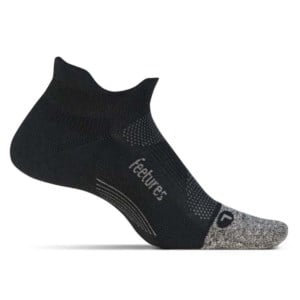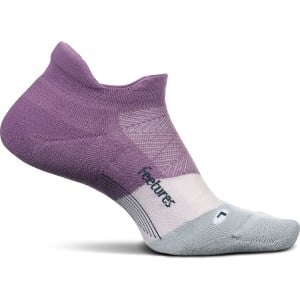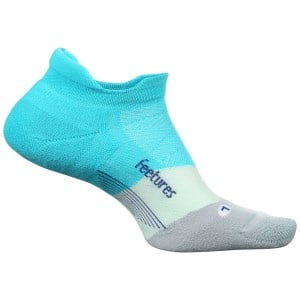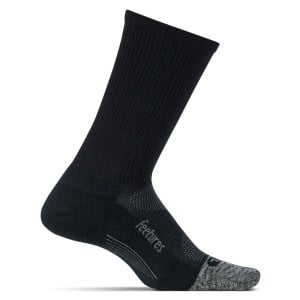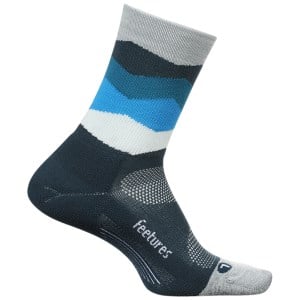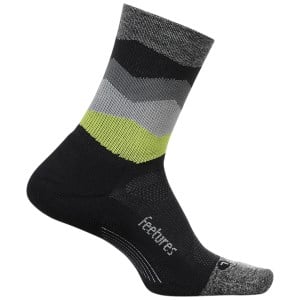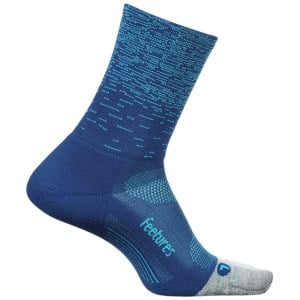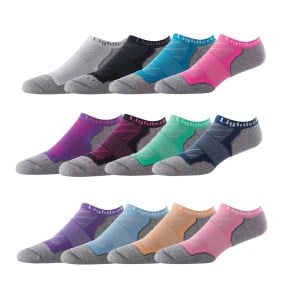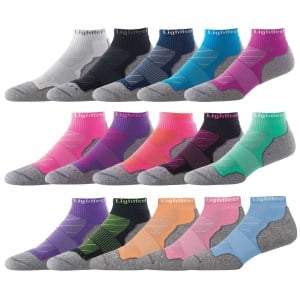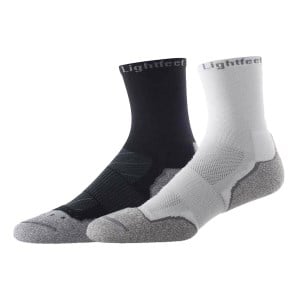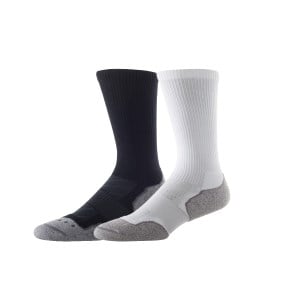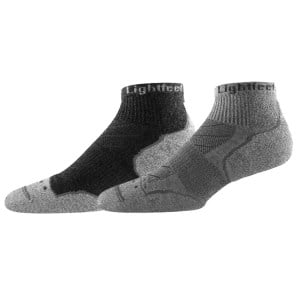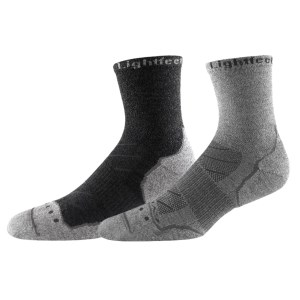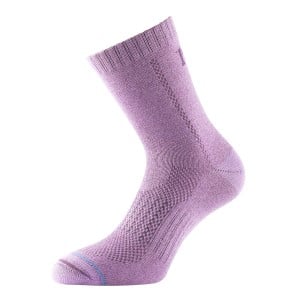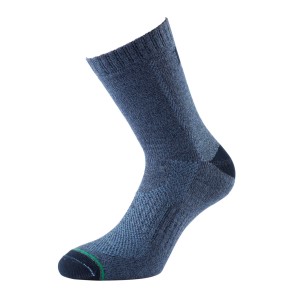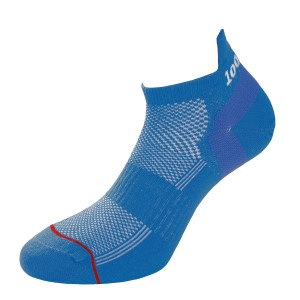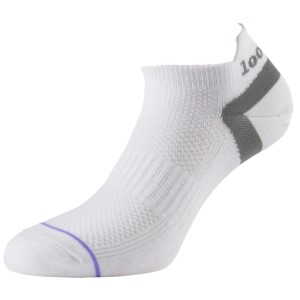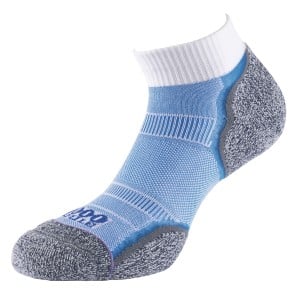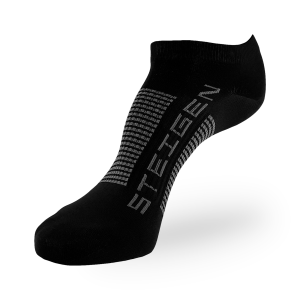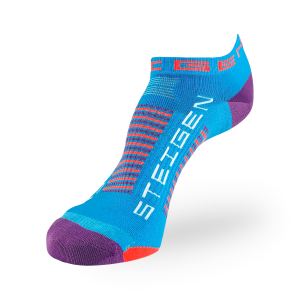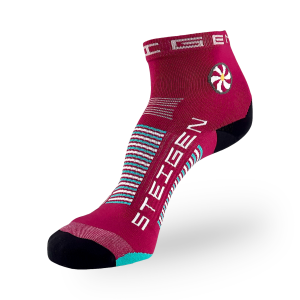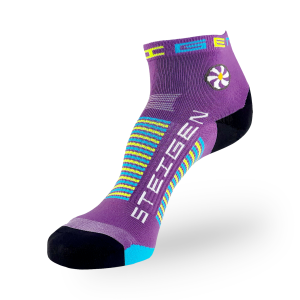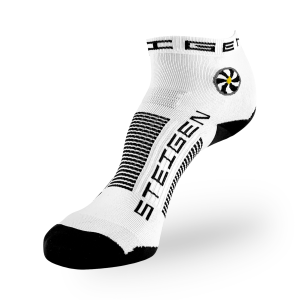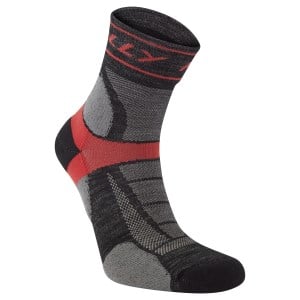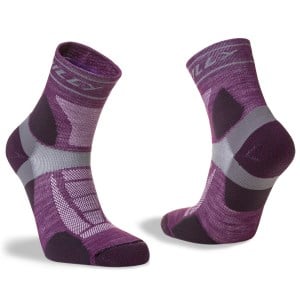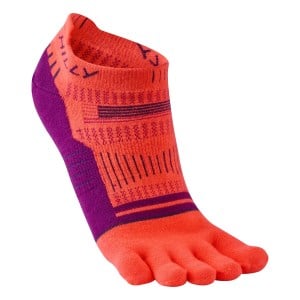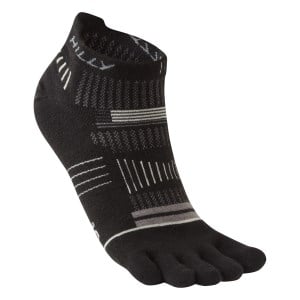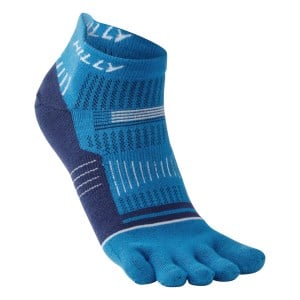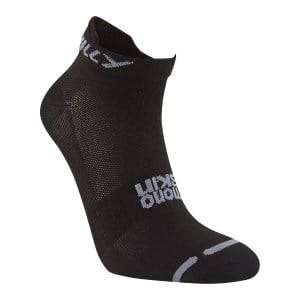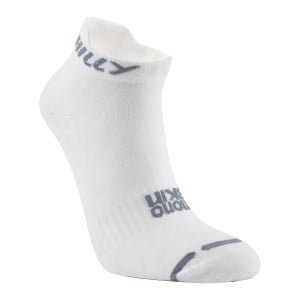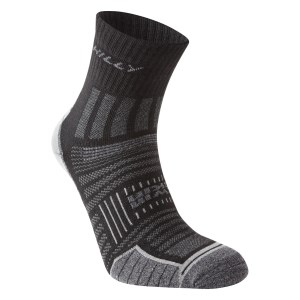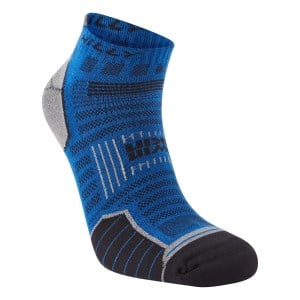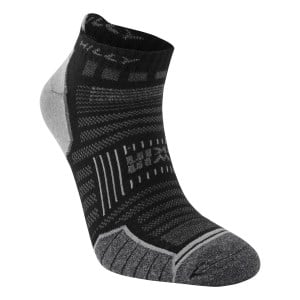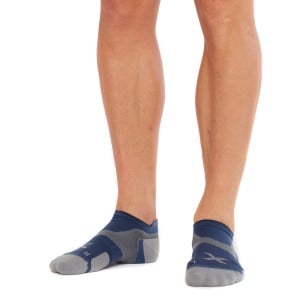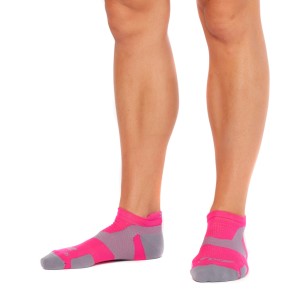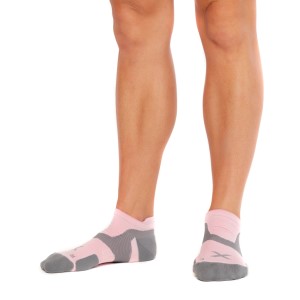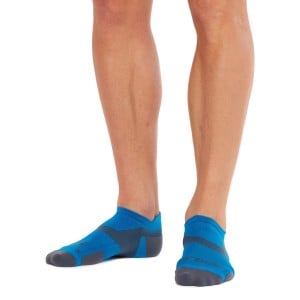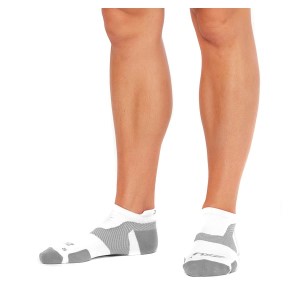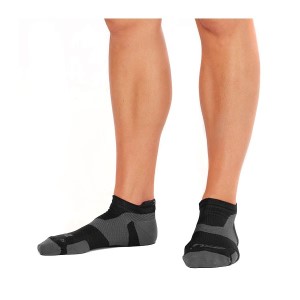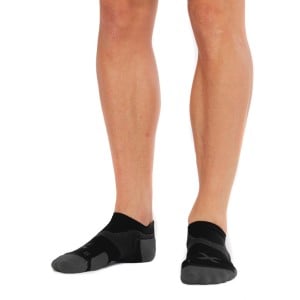5 Reasons You Should Use Technical Running Socks
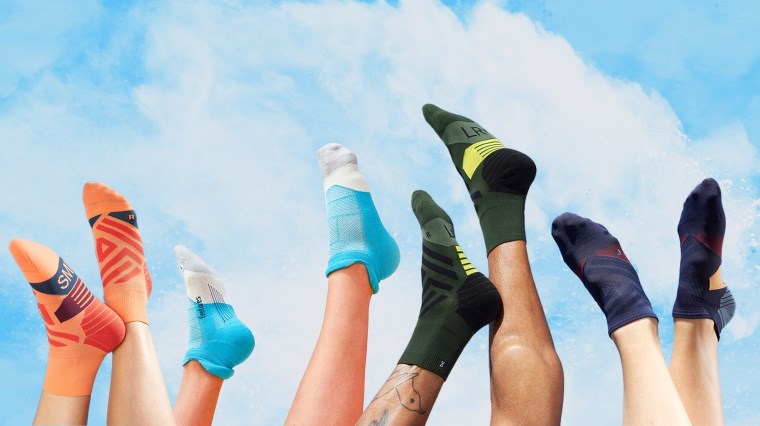
“If you’re not comfortable, you’re less likely to run or enjoy the experience.”
Comfort begins at the first, next-to-skin layer yet runners often underestimate what the right running socks can do for their feet. It's not just about finding the best running sock, but the best running sock for you personally in terms of fit and function.
Shoe expert Reece Taylor gives you his run through on what to look out for when selecting your running socks. He highlights why technical running socks are miles ahead of the pack compared to standard cotton socks when it comes to your comfort and the health of your feet.
Put your best foot forward with Reece’s tips and our summary below.
1. Moisture-Wicking
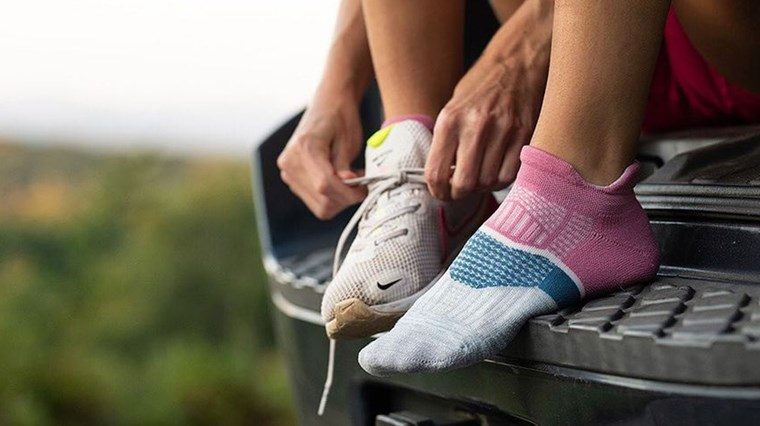
It’s no secret that when you run, you’re going to sweat. This is particularly an issue in the summer months, with the combination of scorching hot days and physical exertion kick your body’s cooling mechanism – perspiration – into overdrive. Sweat itself isn’t a bad thing and in fact it keeps you cool and prevents overheating. However, when paired with the wrong running gear sweat can become a problem.
Cotton socks are made of natural fibres but absorb moisture like a sponge. They trap sweat next to your skin, creating an environment for odour-causing bacteria and putting you at greater risk of fungal infections like athlete’s foot (tinea pedis). A sweat-soaked sock also increases friction and uncomfortable rubbing between the fabric and your skin, making your feet more blister-prone.
Technical running socks on the other hand (or foot) are made of synthetic materials like polyester, nylon and elastane. They’re designed to transfer sweat away from your skin to the exterior of the fabric for quick evaporation, taking excess body heat with it. Being moisture-wicking, technical socks assist in evaporative cooling – allowing your natural temperature regulation to work effectively to keep your feet dry, fresh and comfortable.
If we take a closer look at Feetures most advanced running socks, the Features Elite that are available in Feetures Elite Light Cushion No Show Tab and Feetures Elite Light Cushion Mini Crew heights, their sweat-wicking iWick fibres are the star of the show. Teamed up with the thin, minimalist feel, this technology keeps your active feet in a healthy environment to fight off hot and humid conditions where blisters thrive.
If you prefer natural fibres or natural and synthetic performance blends, Merino wool is a soft, lightweight and breathable material that’s often used in trail running socks. Naturally moisture-wicking and anti-bacterial, Merino wool helps regulate your temperature – keeping you warm in chilly conditions and cool in hot, summery conditions.
Running socks with Merino wool blends like the 1000 Mile All Terrain women's trail running socks, 1000 Mile All Terrain men's trail running socks, Hilly Off Road and Hilly Trail Anklet trail running socks are a must-have to pair with your trail running shoes to take your fitness off the beaten path with comfort and durability.
2. Anatomically Designed

An anatomic fit means the sock conforms to your natural foot shape. If you look at your feet, it’s obvious they’re not symmetrical and technical running socks accommodate for this – being longer at the big toe and tapering towards the smallest toe with a left and right-specific fit.
Paired with a contoured arch and hugging to your heel, these foot-conforming designs ensure less bunching from excess fabric and a more precise, stay-put fit for your running workouts.
If we take this a step further, toe socks like the Hilly Toe socklet offer a more barefoot experience – allowing your toes to splay naturally to potentially improve your running efficiency. They also prevent skin-on-skin friction between your toes to protect these blister-prone areas.
On Running socks take a different route. According to On Running, their socks feature an arch pattern that activates sensory receptors to "prime your feet for the run" - teamed up with a foot-conforming fit that won't bunch up or slide down and ventilation panels for temperature regulation.
2XU running socks offer a compressive fit with X-LOCK technology for an anti-blister, second-skin feel - making them great for high-impact activities and allowing you to focus on finishing strong without distractions or irritation. The left and right specific fit in a variety of heights and styles makes them feel like they were made just for your feet.
It’s important to pay attention to sock sizing. Too small a sock and your toes may feel squashed, restricted or even punch a hole in the end. Too large a sock and the fabric may bunch and cause irritation, and the arch wrap won’t contour to your foot shape effectively.
Buy different coloured pairs of technical running socks to make it easier to identify pairs and reunite the left and right sock of a pair after a wash.
3. Blister Control
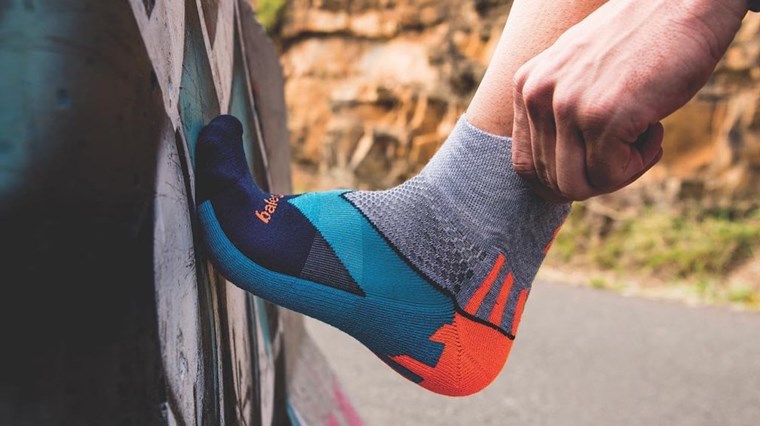
As we touched on earlier, technical running socks are designed to offer anti-blister protection by providing sweat control and offer a secure, non-slip fit to reduce friction.
Running naturally causes friction through movement, so these performance socks aim to keep the movement between the sock and shoe, instead of the skin and sock which can cause irritation down the road. Double layer, anti-blister socks like those from 1000 Mile offer an inner, second-skin layer that moves in harmony with your foot, and an outer layer that moves with the shoe.
Steigen running socks keep it thin to keep it comfortable with a light and barely there feel. Made with a stretchy blend of nylon and Lycra, they hug tightly to your feet to prevent rubbing that can contribute to blisters and eliminate the bulk that comes from non-essential fabric.
Technical running socks often feature ventilation zones made to reduce the build-up of sweat before it can cause a problem. The ventilation channels in Lightfeet running socks encourage air to circulate between your toes. More ventilation means less moisture to worry about and reduced risk of blisters.
The Lightfeet Evolution are available in various heights for personalised coverage, being the Lightfeet Evolution Mini, Lightfeet Evolution Mini Crew, Lightfeet Evolution Half Crew and Lightfeet Evolution Crew. They have stayed the same year in and year out - so loyal Lightfeet fans can trust in their comfort.
Balega also pride themselves on their anti-blister tech, with the Balega Blister Resist No Show, Balega Blister Resist Quarter and Balega Blister Resist Crew running socks being crafted from DRY-MO fibre (a blend of natural Mohair and Drynamix fibre) for temperature regulation, antimicrobial properties and friction-fighting comfort.
Most technical running socks including Falke running socks feature a seamless or an entirely flat toe seam to prevent blister-causing friction and ensure an irritation-free ride for sensitive toes.
4. Different Thickness
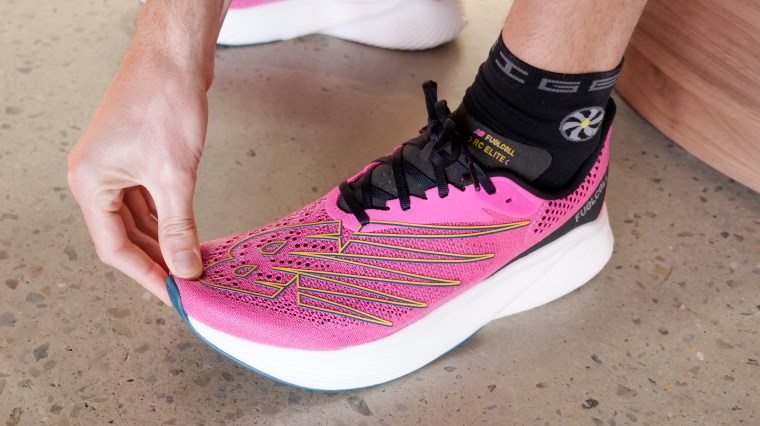
Thin socks
Thin socks like Steigen running socks are the go-to for road warriors that prefer a more ventilated and barefoot feel – following the philosophy that less is more and protecting your feet from blister-causing friction with a second-skin fit. Choosing a thin sock with zero cushioning may even give you a better feel of the road when paired with minimalist running shoes. Alternatively, you may find your running shoes provide plenty of cushioning as is, and a cushioned sock simply isn’t necessary.
Steigen socks are available in multiple heights, being the Steigen Zero Length running socks, Steigen Quarter Length running socks, Steigen Half Length running socks and Steigen Three Quarter Length running socks.
Thick socks
The thickness of your sock can improve the fit of your shoe. The Australian made Lightfeet Evolution running socks that we mentioned previously are a running staple for many athletes, providing cushioning at the heel and around the toe box for a little extra volume at the forefoot. This is fantastic if your foot is relatively narrow at the forefoot and you need a touch extra padding for a snugger fit inside your running shoes. Underfoot, this padded protection helps reduce pressure points and offers a plusher feel to run in comfort, particularly over long distances.
Whether you prefer thin or thick socks may change depending on the specific shoes you’re running in, your running workout (high mileage or interval/tempo sessions) and the external temperature on any given day.
5. Different Heights
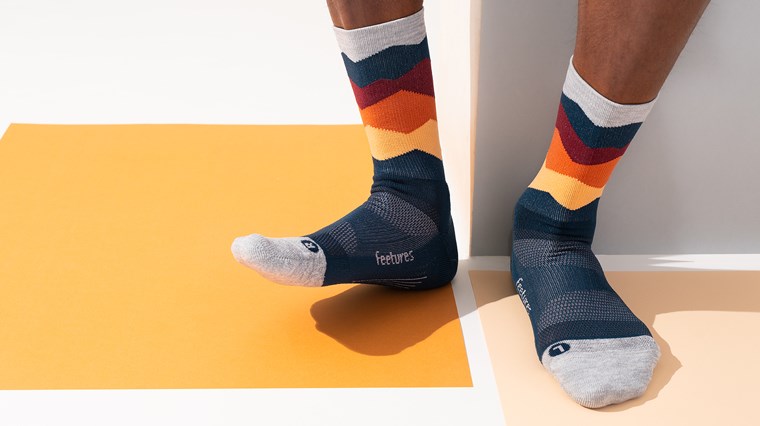
With different heights available including no-show/zero/low, quarter, crew or knee-high - technical running socks allow you to customise your level of protection wherever your run takes you. However, be aware that brands don’t necessarily follow the same system when naming the height of a sock – it can vary from brand to brand but the following will give you a general guide.
No-show and low running socks
For hot running workouts on the road, no-show or low running socks (also called mini crew or socklet) can be the perfect companion – providing just-right coverage no higher than the ankle to fight off blisters without adding extra weight or unnecessary fabric. No-show socks may feature a tab at the back to prevent them sliding into your shoe during activity, which would leave the skin of your heel exposed to blister-causing friction.
Although you should always choose a running shoe based on comfort – not style or colour – it’s no doubt that some leading brands also tick the style factor. For this reason, some runners may prefer no-show socks to prevent any distractions from their go-to running shoes.
Quarter and crew socks
Depending on the temperature or simply due to personal preference, you may gravitate to the slightly higher quarter crew sock or crew socks that approach the mid-calf, being higher again.
There isn’t any dramatic benefits or disadvantage of quarter socks compared to their low running sock cousins for road running – although the higher length coverage may give some runners more confidence that their socks will stay-put and not fall into their shoes.
Quarter and crew socks are often preferred for taking your fitness off-road when paired with the right trail running shoes. Sitting higher up the leg compared to low cut styles, they help prevent foreign objects from entering your shoe for a distraction-free ride.
Knee-high running socks
Trail
If you clock up many hours off-road to regularly enjoy the benefits of trail running, a knee-high running sock can provide extra protection from natural debris like sharp sticks – shielding your skin against minor abrasions. Be aware that even thick, knee-high trail socks aren’t guaranteed to be parasite-proof as mosquitoes, small ticks and leeches can work their way between the weave. However, when paired with other preventative measures (e.g. strong insect repellent), having less exposed skin may make it trickier for little bloodsuckers to hitchhike a ride on your runs.
Compression
Anything that improves your comfort also improves your performance as it allows you to focus on the road ahead. Knee-high compression socks like the CEP Compression Run Socks 3.0 or CEP Ultra Light V2 Compresion Socks from CEP Compression take your performance to the next step. The compressive fit increases the transport of oxygen-rich blood to your active muscles, helping stabilise your muscles on the road and reducing muscle soreness and fatigue during and post-workout to speed up recovery.
Some knee-high socks also feature vibrant colours or reflective patterns that act as a beacon to other road users to keep you safe and seen on your night runs - the CEP Nighttech Reflective Compression Socks are a great example.
CEP Compression socks are also available in no show, low cut, mid cut and high cut heights if knee-high length socks are a touch overkill for your specific type of running workout.
The Wrap Up
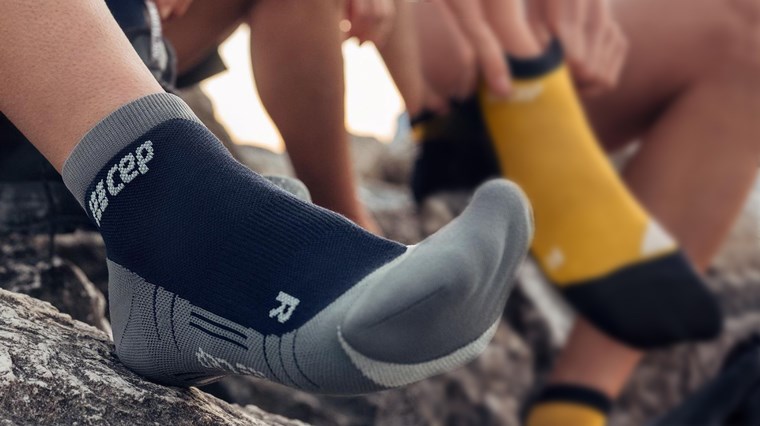
Comfort is a priority from the ground up so it’s important to gear up with technical running socks that suit your specific needs and the conditions from road to trail. Technical running socks not only help you take care of your feet and keep you cool, but they also keep your best running shoes in top shape for longer.
All technical running socks provide a protective layer to stop sweat from absorbing into your shoes, preventing the moist and humid conditions that odour-causing bacteria love to throw a party in. This is especially a problem when running sockless – but if you prefer a barefoot feel, a thin technical sock like Steigen is certainly the one for you.
Alternatively, thicker running socks with zoned padding like Lightfeet offer an ideal partnership for runners that crave soft cushioning. Unlike your sports socks, your running shoes can’t be thrown into the washing machine – so it’s well-worth investing in a trusty pair of technical running socks to keep both your shoes and feet running happy.
If you liked this, then you'll love:
Running Shoe Guide 1: What To Do When Your New Running Shoes Arrive
Running Shoe Guide 2: How To Break In Your New Running Shoes
Running Shoe Guide 3: How To Clean And Care For Your New Running Shoes
Subscribe to our YouTube channel so you never miss out on the latest shoe reviews and other practicals tips for runners.
Happy running!
-
23 other coloursFeetures Elite Light Cushion No Show Tab Running Socks
-
23 other coloursFeetures Elite Light Cushion No Show Tab Running Socks
-
23 other coloursFeetures Elite Light Cushion No Show Tab Running Socks
-
23 other coloursFeetures Elite Light Cushion No Show Tab Running Socks
-
23 other coloursFeetures Elite Light Cushion No Show Tab Running Socks
-
24 other coloursFeetures Elite Light Cushion Mini Crew Running Socks
-
24 other coloursFeetures Elite Light Cushion Mini Crew Running Socks
-
24 other coloursFeetures Elite Light Cushion Mini Crew Running Socks
-
24 other coloursFeetures Elite Light Cushion Mini Crew Running Socks
-
saleLightfeet Evolution Mini - Unisex Running Socks
-
saleLightfeet Evolution Mini Crew - Unisex Running Socks
-
saleLightfeet Evolution Half Crew - Unisex Running Socks
-
saleLightfeet Evolution Crew - Unisex Running Socks
-
saleLightfeet Evolution Mini Crew - Trail Running Socks
-
saleLightfeet Evolution Half Crew - Trail Running Socks
-
sale1 other colour1000 Mile All Terrain Womens Trail Running/Hiking Socks
-
sale1 other colour1000 Mile All Terrain Mens Trail Running/Hiking Socks
-
sale2 other colours1000 Mile Ultimate Tactel Trainer Mens Sports Socks - Double Layer, Anti Blister
-
sale2 other colours1000 Mile Ultimate Tactel Trainer Mens Sports Socks - Double Layer, Anti Blister
-
sale2 other colours1000 Mile Ultimate Tactel Trainer Mens Sports Socks - Double Layer, Anti Blister
-
sale1000 Mile Breeze Anklet Womens Sports Socks - Double Layer, Anti Blister
-
sale11 other coloursSteigen Zero Length Running Socks
-
sale11 other coloursSteigen Zero Length Running Socks
-
sale11 other coloursSteigen Zero Length Running Socks
-
sale15 other coloursSteigen Quarter Length Running Socks
-
sale15 other coloursSteigen Quarter Length Running Socks
-
sale15 other coloursSteigen Quarter Length Running Socks
-
11 other coloursSteigen Three Quarter Length Running Socks
-
sale11 other coloursSteigen Three Quarter Length Running Socks
-
sale1 other colourHilly Trail Anklet Running Socks - Medium Cushioning
-
sale1 other colourHilly Trail Anklet Womens Running Socks - Medium Cushioning
-
sale2 other coloursHilly Toe Socklet - Womens Running Socks
-
sale2 other coloursHilly Toe Socklet - Running Socks
-
sale2 other coloursHilly Toe Socklet - Running Socks
-
sale1 other colourHilly Lite Socklet - Running Socks
-
sale1 other colourHilly Lite Socklet - Running Socks
-
sale1 other colourHilly Twin Skin Anklet - Anti-Blister Running Socks
-
sale2 other coloursHilly Twin Skin Socklet - Anti-Blister Running Socks
-
sale2 other coloursHilly Twin Skin Socklet - Anti-Blister Running Socks
-
sale1 other colourOn Mens Running Low Socks
-
sale3 other colours2XU Vectr Cushion No Show - Unisex Running Socks
-
sale3 other colours2XU Vectr Light Cushion No Show - Unisex Running Socks
-
sale3 other colours2XU Vectr Cushion No Show - Unisex Running Socks
-
sale3 other colours2XU Vectr Light Cushion No Show - Unisex Running Socks
-
sale3 other colours2XU Vectr Light Cushion No Show - Unisex Running Socks
-
sale3 other colours2XU Vectr Light Cushion No Show - Unisex Running Socks
-
sale3 other colours2XU Vectr Cushion No Show - Unisex Running Socks

